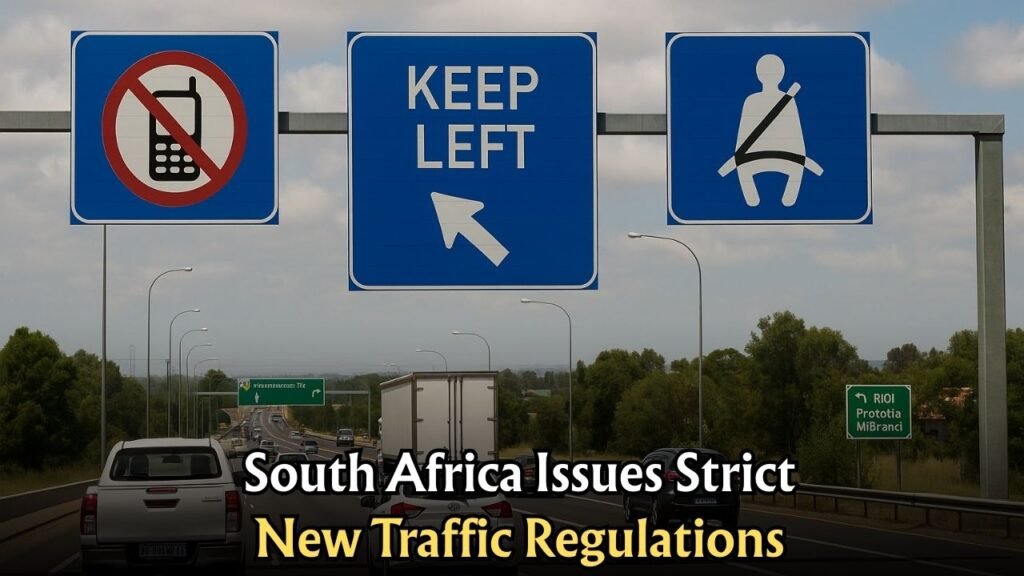Major Driving Rule Changes in South Africa by 2025: South Africa is gearing up for significant changes in its driving regulations, set to take full effect by 2025. These adjustments aim to enhance road safety, streamline traffic management, and align with global standards. As urban centers like Johannesburg and Cape Town continue to expand, the demand for improved traffic systems becomes increasingly urgent. Authorities are focused on reducing road accidents, congestion, and ultimately, fatalities. With these changes on the horizon, South African drivers and pedestrians can expect a transformation in how they navigate the roads. Key elements of these reforms include stricter penalties, innovative technology integration, and updated licensing procedures, all tailored to create a safer and more efficient driving environment.

Anticipated Amendments to Traffic Regulations
The anticipated amendments to traffic regulations in South Africa are designed to address the long-standing issues of road safety and congestion. By 2025, the government plans to implement a series of measures aimed at curbing reckless driving and ensuring smoother traffic flow. Among these changes, stricter enforcement of speed limits is expected to play a pivotal role. This will likely involve increased use of speed cameras and a more rigorous penalty system for offenders. Additionally, there is talk of introducing a demerit point system that would penalize drivers for infractions, potentially leading to the suspension of driving privileges for repeat offenders. The overarching goal is to deter dangerous driving behaviors that contribute to the high number of accidents reported each year. Furthermore, enhanced road signage and improved infrastructure are also on the agenda, ensuring that drivers have a clear understanding of the rules and can navigate roads safely and efficiently.
Integration of Advanced Technology in Driving Systems
Another significant aspect of the upcoming driving rule changes involves the integration of advanced technology in driving systems. By 2025, South Africa aims to embrace technological advancements to foster a safer and more efficient driving environment. This includes the implementation of intelligent traffic management systems that utilize AI and big data to optimize traffic flow and reduce congestion in real-time. Additionally, the introduction of electronic tolling systems is set to streamline the process for road users, minimizing delays and improving efficiency on major highways. The government is also exploring the potential of autonomous vehicle technology, which, although still in its nascent stages, promises to revolutionize the way South Africans commute. The adoption of these technologies not only aligns with global trends but also positions South Africa as a forward-thinking nation in the realm of road safety and traffic management.
Implications for Drivers and Pedestrians
The implications of these driving rule changes for drivers and pedestrians in South Africa are far-reaching. For drivers, adapting to new regulations will require a heightened awareness and understanding of the updated traffic laws. This may involve additional training and education programs aimed at familiarizing drivers with the changes. For instance, the introduction of a demerit point system could necessitate regular checks on one’s driving record to avoid penalties. Pedestrians, on the other hand, can expect enhanced safety measures designed to protect them in urban areas. The installation of pedestrian-friendly infrastructure, such as better crosswalks and traffic lights, is anticipated to reduce the risk of accidents. Furthermore, public awareness campaigns are likely to be rolled out to educate all road users about the importance of adhering to new regulations. Ultimately, these changes aim to create a harmonious coexistence between drivers and pedestrians, fostering a safer environment for all.
Preparing for the Future of South African Roads
Preparing for the future of South African roads requires proactive engagement from both the government and the public. As the 2025 deadline approaches, the government has a crucial role in ensuring the successful implementation of these changes. This involves not only updating existing infrastructure but also investing in new technologies and systems that support the envisioned reforms. Public participation is equally important, as compliance with new regulations is essential for achieving the desired outcomes. Community engagement initiatives and educational programs will be instrumental in fostering a culture of safety and responsibility among road users. Additionally, collaboration with private sector stakeholders can drive innovation and provide the necessary resources to support these initiatives. As South Africa navigates this transformative period, a collective effort will be required to ensure that the nation’s roads are safer, more efficient, and reflective of international standards.




